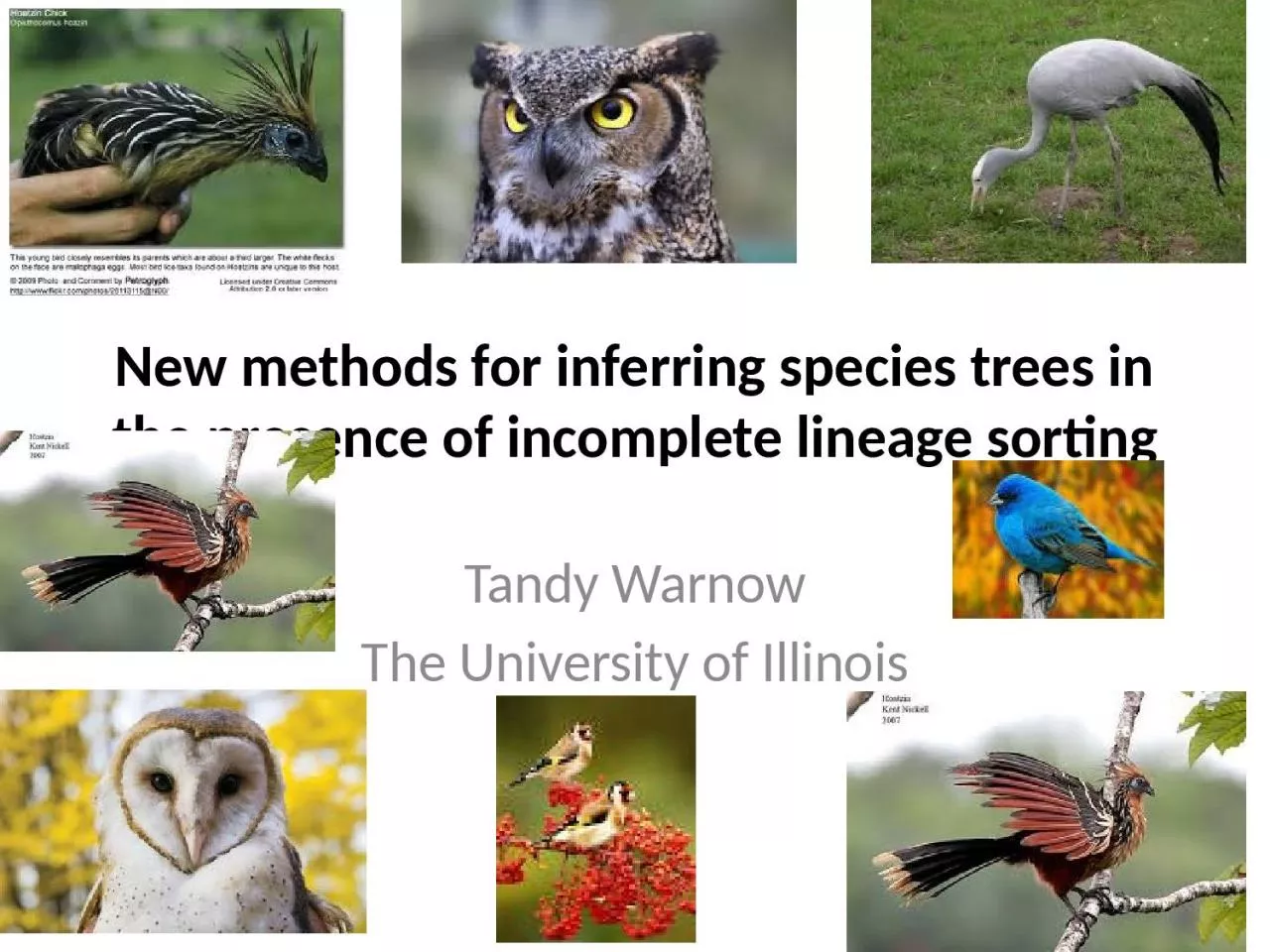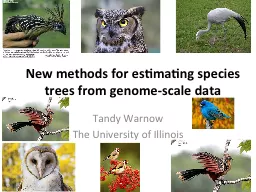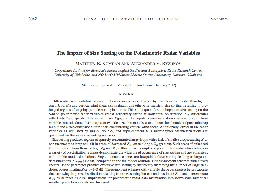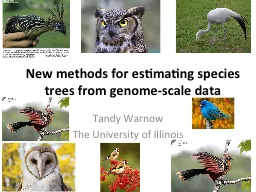PPT-New methods for inferring species trees in the presence of incomplete lineage sorting
Author : eartala | Published Date : 2020-08-28
Tandy Warnow The University of Illinois Avian Phylogenomics Project G Zhang BGI Approx 50 species whole genomes 8000 genes UCEs MTP Gilbert Copenhagen S Mirarab
Presentation Embed Code
Download Presentation
Download Presentation The PPT/PDF document "New methods for inferring species trees ..." is the property of its rightful owner. Permission is granted to download and print the materials on this website for personal, non-commercial use only, and to display it on your personal computer provided you do not modify the materials and that you retain all copyright notices contained in the materials. By downloading content from our website, you accept the terms of this agreement.
New methods for inferring species trees in the presence of incomplete lineage sorting: Transcript
Download Rules Of Document
"New methods for inferring species trees in the presence of incomplete lineage sorting"The content belongs to its owner. You may download and print it for personal use, without modification, and keep all copyright notices. By downloading, you agree to these terms.
Related Documents














